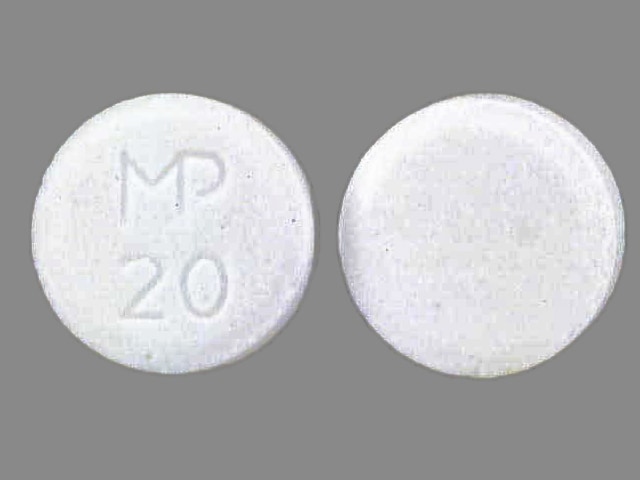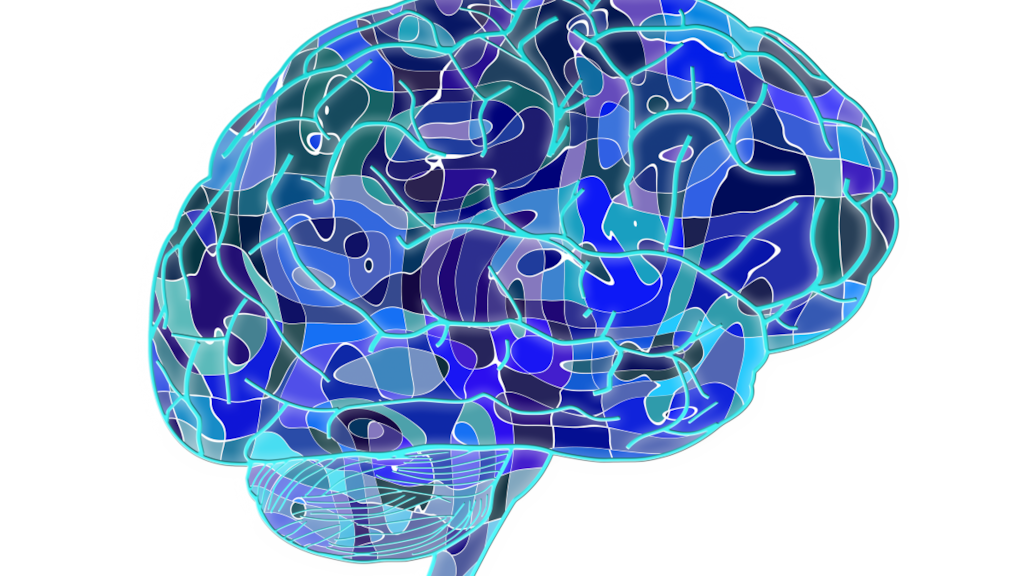Dosage Forms
Excipient information presented when available (limited, particularly for generics); consult specific product labeling.
Tablet, Oral:
Generic: 1 mg
Pharmacology
Mechanism of Action
Ergoloid mesylates do not have the vasoconstrictor effects of the natural ergot alkaloids; exact mechanism in dementia is unknown; originally classed as peripheral and cerebral vasodilator, now considered a "metabolic enhancer"; there is no specific evidence that clearly establishes the mechanism by which ergoloid mesylate preparations produce mental effects, nor is there conclusive evidence that the drug particularly affects cerebral arteriosclerosis or cerebrovascular insufficiency.
Pharmacokinetics/Pharmacodynamics
Absorption
Rapid yet incomplete
Metabolism
Hepatic, including first-pass metabolism
Time to Peak
Serum: 1.5 to 3 hours
Half-Life Elimination
Serum: ~2.6 to 5.1 hours
Use: Labeled Indications
Mental capacity decline: Treatment of signs and symptoms of an idiopathic decline in mental capacity.
Note: Individuals who do respond come from groups of patients who would be considered clinically to suffer from some ill-defined process related to aging or to have some underlying dementing condition (ie, primary progressive dementia, Alzheimer dementia, senile onset, multi-infarct dementia).
Contraindications
Hypersensitivity to ergoloid mesylates, ergot, or any component of the formulation; acute or chronic psychosis; concurrent use with potent inhibitors of cytochrome P450 (CYP-450) 3A4 (includes protease inhibitors, azole antifungals, and some macrolide antibiotics).
Canadian labeling: Additional contraindications (not in US labeling): Severe bradycardia; severe hypotension.
Documentation of allergenic cross-reactivity for ergot alkaloids is limited. However, because of similarities in chemical structure and/or pharmacologic actions, the possibility of cross-sensitivity cannot be ruled out with certainty.
Dosage and Administration
Dosing: Adult
Mental capacity decline: Oral: 1 mg 3 times daily; results may not be observed until 3 to 4 weeks.
Dosing: Geriatric
Avoid use (Beers Criteria [AGS 2019]).
Storage
Store at 20°C to 25°C (68°F to 77°F).
Ergoloid Mesylates Images
Drug Interactions
Antihepaciviral Combination Products: May increase the serum concentration of Ergot Derivatives. Avoid combination
Aprepitant: May increase the serum concentration of CYP3A4 Substrates (High risk with Inhibitors). Monitor therapy
Beta-Blockers: May enhance the vasoconstricting effect of Ergot Derivatives. Consider therapy modification
Chloroprocaine: May enhance the hypertensive effect of Ergot Derivatives. Monitor therapy
Clofazimine: May increase the serum concentration of CYP3A4 Substrates (High risk with Inhibitors). Monitor therapy
Conivaptan: May increase the serum concentration of CYP3A4 Substrates (High risk with Inhibitors). Avoid combination
CYP3A4 Inhibitors (Moderate): May decrease the metabolism of CYP3A4 Substrates (High risk with Inhibitors). Monitor therapy
CYP3A4 Inhibitors (Strong): May decrease the metabolism of CYP3A4 Substrates (High risk with Inhibitors). Consider therapy modification
Duvelisib: May increase the serum concentration of CYP3A4 Substrates (High risk with Inhibitors). Monitor therapy
Erdafitinib: May increase the serum concentration of CYP3A4 Substrates (High risk with Inhibitors). Monitor therapy
Fosaprepitant: May increase the serum concentration of CYP3A4 Substrates (High risk with Inhibitors). Monitor therapy
Fosnetupitant: May increase the serum concentration of CYP3A4 Substrates (High risk with Inhibitors). Monitor therapy
Fusidic Acid (Systemic): May increase the serum concentration of CYP3A4 Substrates (High risk with Inhibitors). Avoid combination
Idelalisib: May increase the serum concentration of CYP3A4 Substrates (High risk with Inhibitors). Avoid combination
Itraconazole: May increase the serum concentration of Ergoloid Mesylates. Avoid combination
Ketoconazole (Systemic): May increase the serum concentration of Ergoloid Mesylates. Avoid combination
Larotrectinib: May increase the serum concentration of CYP3A4 Substrates (High risk with Inhibitors). Monitor therapy
Letermovir: May increase the serum concentration of Ergot Derivatives. Avoid combination
Lorcaserin: May enhance the adverse/toxic effect of Ergot Derivatives. Specifically, use of these drugs together may increase the risk of developing valvular heart disease. Lorcaserin may enhance the serotonergic effect of Ergot Derivatives. This could result in serotonin syndrome. Avoid combination
Macrolide Antibiotics: May increase the serum concentration of Ergot Derivatives. Cabergoline and Clarithromycin may interact, see specific monograph for full details. Exceptions: Azithromycin (Systemic); Fidaxomicin; Spiramycin. Consider therapy modification
MiFEPRIStone: May increase the serum concentration of CYP3A4 Substrates (High risk with Inhibitors). Management: Minimize doses of CYP3A4 substrates, and monitor for increased concentrations/toxicity, during and 2 weeks following treatment with mifepristone. Avoid cyclosporine, dihydroergotamine, ergotamine, fentanyl, pimozide, quinidine, sirolimus, and tacrolimus. Consider therapy modification
Nefazodone: Ergot Derivatives may enhance the serotonergic effect of Nefazodone. This could result in serotonin syndrome. Nefazodone may increase the serum concentration of Ergot Derivatives. Avoid combination
Netupitant: May increase the serum concentration of CYP3A4 Substrates (High risk with Inhibitors). Monitor therapy
Nitroglycerin: Ergot Derivatives may diminish the vasodilatory effect of Nitroglycerin. This is of particular concern in patients being treated for angina. Nitroglycerin may increase the serum concentration of Ergot Derivatives. Avoid combination
Palbociclib: May increase the serum concentration of CYP3A4 Substrates (High risk with Inhibitors). Monitor therapy
Posaconazole: May increase the serum concentration of Ergoloid Mesylates. Avoid combination
Protease Inhibitors: May increase the serum concentration of Ergot Derivatives. Avoid combination
Reboxetine: May enhance the hypertensive effect of Ergot Derivatives. Monitor therapy
Roxithromycin: May increase the serum concentration of Ergot Derivatives. Avoid combination
Serotonergic Agents (High Risk): Ergot Derivatives may enhance the serotonergic effect of Serotonergic Agents (High Risk). This could result in serotonin syndrome. Management: Monitor for signs and symptoms of serotonin syndrome/serotonin toxicity (eg, hyperreflexia, clonus, hyperthermia, diaphoresis, tremor, autonomic instability, mental status changes) when these agents are combined. Exceptions: Nefazodone. Monitor therapy
Serotonin 5-HT1D Receptor Agonists (Triptans): Ergot Derivatives may enhance the vasoconstricting effect of Serotonin 5-HT1D Receptor Agonists (Triptans). Serotonin 5-HT1D Receptor Agonists (Triptans) may enhance the vasoconstricting effect of Ergot Derivatives. Avoid combination
Simeprevir: May increase the serum concentration of CYP3A4 Substrates (High risk with Inhibitors). Monitor therapy
Stiripentol: May increase the serum concentration of CYP3A4 Substrates (High risk with Inhibitors). Management: Use of stiripentol with CYP3A4 substrates that are considered to have a narrow therapeutic index should be avoided due to the increased risk for adverse effects and toxicity. Any CYP3A4 substrate used with stiripentol requires closer monitoring. Consider therapy modification
Voriconazole: May increase the serum concentration of Ergoloid Mesylates. Avoid combination
Adverse Reactions
Frequency not defined. Adverse effects are minimal.
Cardiovascular: Bradycardia, flushing, orthostatic hypotension
Dermatologic: Skin rash
Gastrointestinal: Gastrointestinal distress (sublingual administration), nausea (sublingual administration; transient)
Local: Local irritation (sublingual administration)
Ophthalmic: Blurred vision
Respiratory: Nasal congestion
Warnings/Precautions
Concerns related to adverse effects:
- Cardiac valvular fibrosis: Ergot alkaloids have been associated with fibrotic valve thickening (eg, aortic, mitral, tricuspid); usually associated with long-term, chronic use.
- Pleural/retroperitoneal fibrosis: Rare cases of pleural and/or retroperitoneal fibrosis have been reported with prolonged daily use.
Concurrent drug therapy issues:
- Drug-drug interactions: Additional potentially significant interactions may exist, requiring dose or frequency adjustment, additional monitoring, and/or selection of alternative therapy. Consult Drug Interactions for more detailed information.
Other warnings/precautions:
- Appropriate use: Careful diagnosis should be attempted before prescribing. Because target symptoms are of unknown etiology, exclude potentially reversible and treatable conditions; particular care should be taken to exclude delirium and dementiform illness secondary to systemic disease, primary neurological disease, or primary disturbance of mood.
Patient Education
- Discuss specific use of drug and side effects with patient as it relates to treatment. (HCAHPS: During this hospital stay, were you given any medicine that you had not taken before? Before giving you any new medicine, how often did hospital staff tell you what the medicine was for? How often did hospital staff describe possible side effects in a way you could understand?)
- Patient may experience abdominal pain. Have patient report immediately to prescriber severe nausea or severe vomiting (HCAHPS).
- Educate patient about signs of a significant reaction (eg, wheezing; chest tightness; fever; itching; bad cough; blue skin color; seizures; or swelling of face, lips, tongue, or throat). Note: This is not a comprehensive list of all side effects. Patient should consult prescriber for additional questions.
Intended Use and Disclaimer: Should not be printed and given to patients. This information is intended to serve as a concise initial reference for health care professionals to use when discussing medications with a patient. You must ultimately rely on your own discretion, experience, and judgment in diagnosing, treating, and advising patients.




